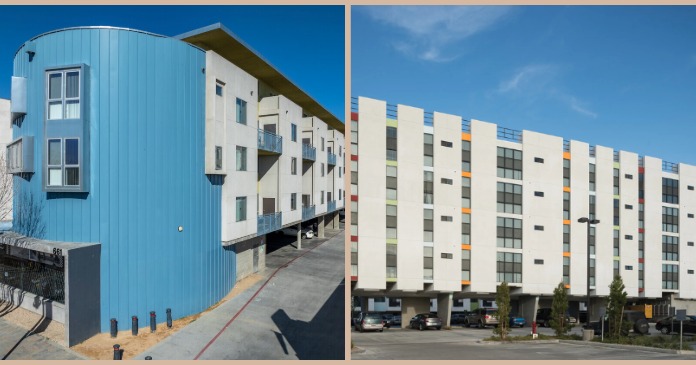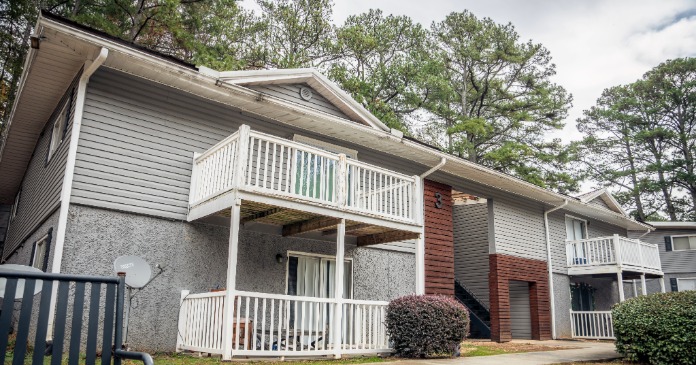Yield PRO TV presents NAHB Power Hitters. Guest host and Editor-in-Chief Michael Rudy talks with Sean Kelly, Executive Vice President of LNWA.
Transcript: NAHB Power Hitters interview. Michael Rudy with Sean Kelly recorded December 1, 2022
(music)
Michael Rudy: This is Michael Rudy, Yield Pro editor in chief, filling in for Linda Hoffman today. Linda’s under the weather with a case of laryngitis, but I assure you this is one interview she’s very sorry to miss. Two years ago—it’s hard to believe—Power Hitters is now in its third year—50 episodes—over a million views. One of Linda’s first interviews was Kevin Kelly, managing principle of Leon Weiner and Associates headquartered in Wilmington, Delaware.
Today we bring it full circle with another Kelly… this time Sean Kelly, also with LNWA. Sean is the son of Kevin and, at least in this case, it appears that multifamily housing is a family business. As EVP for the company, Sean oversees all development across LNWA’s 10-state footprint along the eastern seaboard.
I recently reported on a survey released in late September that found that construction delays are a major challenge in apartment development. Delays include everything from supply chain disruptions to economic uncertainty. The average cost of apartment construction rose 9 percent according to the national survey. Risk is everywhere.
Sean is someone who know quite a bit about risk. Sean, it’s great to have you on the show.
Sean Kelly: Hi Michael. I appreciate the invitation and I’m happy to be with you.
Michael Rudy: Sean, a lot has changed in the 2 years since we interviewed your dad. What do we need to know about you and LNWA?
Sean Kelly: Sure. Well, LNWA is an East Coast-based developer with vertically integrated property management and general contracting in-house. We own and operate more than 6,000 apartments in the mid-Atlantic, Midwest and New England states and our company was founded in 1949 by Leon Weiner. Mr. Weiner was a legend in a homebuilding industry and I think, Michael, we could spend an entire podcast discussing his impact. But rather than do that that I would summarize by saying that when Mr. Weiner was inducted into the Housing Hall of Fame, he was called the, “conscience of the housing industry,” by his peers
And we at LNWA still very much take a mission minded approach to our housing developments. And we try to always view our efforts through the lenses of the communities in which we work. I am, as you mentioned, a second-generation developer. My father, Kevin Kelly, serves as our company chairman. And I am in my 13th year working professionally for the company, although I certainly grew up across… driving our jobsites on the weekends and now I’m fortunate enough to lead our real estate development team as executive vice president.
Michael Rudy: LNWA mostly operates in the contiguous Northeast… with the exception of Maine. You’re in New York, New Jersey, Pennsylvania and Connecticut… but not Rhode Island, Massachusetts, New Hampshire or Vermont. What’s the strategy?
Sean Kelly: Well so, to clarify, I think I heard you correctly. We actually do operate in Maine. And it’s a great question in why we kind of skipped over certain states in New England. And you know given our 70-year history, which has spanned single-family, multifamily and hospitality development, we’ve become good at a few things. And I would say identifying undervalued opportunities that make sense for our business model is one. And understanding when a partner-driven initiative can drive value for our company or realize value for our company is another.
And I would say our presence in Maine is really a combination of those two things. So LNWA works very closely with the group of Portland, Maine-based partners to jointly pursue real estate development deals in that state. And our organization has an office there. So, our presence in Maine is really driven by our partners at Renewal Housing who have become very innovative in developing affordable for-sale housing serving folks between 60 and 120 percent of median income, which is often referred to as the missing middle.
So, when we can figure out the economics of an underserved need like the affordable for-sale market, we’re happy to expand our geographic footprint—and Maine has certainly been a great state to working in. And I would say stay tuned for Vermont.
Michael Rudy: OK. Where have you found the most favorable development environment for housing and what can the other regions learn from it?
Sean Kelly: So, our company has our home office—we have a ten-state footprint as you mentioned at the top. But our home office and our property management operations are actually based out of Wilmington, Delaware, and that’s where we were founded. And there’s a saying that you may have heard mentioned by President Biden called the Delaware Way. And the Delaware Way speaks to the fact that as the state, Delaware has—and our company has—really close lines of communication with our state, local, and federal elected officials. And we as an organization believe that advocacy for housing is of utmost importance.
So, Delaware allows us to bend the ear, so to speak, of our elected officials in a way that we can explain to them in great detail the constraints and the opportunities in providing housing—and specifically affordable housing—which is a core component of our business. So, I would not say that Delaware is markedly different in its regulatory scheme from other states that we work in. However, the ability to access decision-makers in a way that provides a platform for housing is something that creates deeper focus and therefore a more favorable environment.
So, we’ve been very successful in creating housing opportunities across the state. We have completed both affordable rental, market rate rental, for-sale housing and recently this year opened a select-service Marriott in Middletown, Delaware. So to kind of fully answer your question Michael, I think other states could benefit from making housing a top priority of their elected officials, and organically, that will break down some of these regulatory hurdles that we hear a lot of.
Michael Rudy: In covering the affordable market, I find that it’s all in the financing. Project design, not so much. How does affordable product design differ from non-luxury market rate… and can such a thing can be built today?
Sean Kelly: Well, in my experience these days there is virtually no difference in the quality or aesthetic of affordable rental housing being produced versus market-rate rental. You know, we just completed a 50-unit tax credit financed property for seniors in Bucks County, Pennsylvania, that was certified by the Department of Energy as net zero rent. Something you rarely, if ever, see completed on the market rate side of the business.
So, I would say that the design elements in affordable rental are virtually indistinguishable from the market-rate counterparts. However, there are certainly flashy amenities that you see in market rate housing, like a large elaborate pool, for example, that often don’t make sense for affordable housing because, for us, site selection becomes the priority and is often driven by an ability to co-locate affordable housing near transit opportunities or job opportunities, rather than in locations that would require residents to utilize their vehicle to get around. So, I would just point to the fact that affordable rental housing is consistently winning multifamily industry awards, such as the NAHB Pillars Awards when paired against its market rate counterparts. And I certainly think that speaks volumes.
Michael Rudy: Could smaller units and fewer amenities be the answer to unsubsidized workforce housing or do regulatory requirements, land prices and construction costs push such product beyond the reach of middle-income workers?
Sean Kelly: So, I think that this question ties closely to the need for reforms that are more permissive of higher density housing. You know we have a patchwork of unsustainable zoning policies nationwide that really limit the production of house. I recently had the opportunity to see a presentation from a very interesting group out of Cornell University who have established what’s called a National Zoning Atlas and it’s a database.
And the data in which, a database utilizing geographic information systems and mapping technology that really take a close look at our zoning across this country. And really, we are still operating under codes and policies that incentivize single-family housing on oversized lots in the vast majority of our country. And I really think that we need to get back to developing more densely in transit-oriented corridors and then I believe the analysis of the smaller units and the amenities should certainly be considered.
You know with regards to smaller units I am encouraged to see the acceptance of more accessory dwelling units on single-family lots. I do think that that can have an impact locally, however, I believe we are also nibbling at the edges here without meaningful zoning reform.
Michael Rudy: Switching gears, you’re Chairman of the Board of Trustees for NAHB’s multifamily council for 2022. What are the main achievements for the council this year?
Sean Kelly: Well, NAHB staff, I would say, is the gold standard in keeping our industry informed on the housing issues on Capitol Hill. You know from an advocacy standpoint, our group is very concerned about an emerging acceptance of rent control restrictions, for example, has been an issue we’ve been working very hard on. And we think that you know the data certainly point to and studies have shown that rent control appears to assist residents in a short-term manner. But most major policymakers and academics would agree that over the long run, rent control decreases investment and therefore creates additional challenges as related to housing affordability.
So that is an item that we have had robust discussion and continue to engage across NAHB’s platform of skilled legal affairs experts and government affairs experts to continue to track that very closely.
Additionally Multifamily Counsel and our group have been an incredibly important resource for accessing and discussing with economists and sharing ideas on what has been a drastically changing interest rate environment of 2022. And you know finally NAHB in concert with the stakeholders in the Federation, myself included, have been incredibly effective at winning several housing-related provisions that are included within the Inflation Reduction Act, which will mitigate what we think will be some unintended consequences of what is a very large piece of legislation.
Michael Rudy: President Biden announced a plan to increase the production and preservation of housing in the US. Other than increasing funding to existing programs, what aspect of his plan do you think would be most successful in raising housing production?
Sean Kelly: Well, I do think that the most near-term tool that the White can utilize is to expand and improve the existing forms of federal financing for housing such as Community Development Block Grants, or the FHA loan programs. That funding will allow developers to offset certain elements of the uncertain interest rate environment. We already talked earlier about the need to incentivize nationwide zoning reform and land-use policies so we were certainly very encouraged to see that message delivered by the Biden White House.
Michael Rudy: Any aspects of his plan that may be counter-productive?
Sean Kelly: Well, so while I think the intention is correct, Michael, I think there are aspects of the Biden Administration’s proposal that involve integrating housing programs and incentives under the Department of Transportation that I’m concerned, and I believe my colleagues at NAHB are concerned, will add more regulatory burden and create additional back costs.
Michael Rudy: Great show, Sean. Say hi to your dad for us and I hope we can have you back. I really learned a lot of great stuff.
Sean Kelly: Thank you for having me. Anytime.
Michael Rudy: Something has to change. Just at a time when we should be increasing housing production… it’s falling. Again. I’m glad that we have the best minds focused on solving this decades old problem.
Thank you for joining us today. We hope you enjoyed the show and thank you for bearing through the impromptu guest host. I can say with certainty that myself and the Yield Pro team are multifamily housing’s greatest fans.
As such, Linda Hoffman and I are in the process of writing a book on its greats… the stories of builders, developers and operators who—through time—have made a genuine and valuable mark on the world of apartments. Once published, the book entitled GRIT will be available everywhere including the NAHB book store.
If you know of someone—and we’re looking for those with a serious track record, the battle born—please reach out as we work to capture the successes, the lessons and the strategies that have made our nation’s multifamily housing great. Until then, I’m Michael Rudy. See you on our next exciting episode of Power Hitters.
(music, close, credits)
NAHB POWER HITTERS (logo)
In association with National Association of Home Builders (logo)
Building Homes, Enriching Communities, Changing Lives
Yield Pro TV (logo)
An Image Production
Host Linda Hoffman
Executive Producer Andrew Nicks
Research Michael Rudy
Guest selection and coordination Dean Schwancke
Production Image
Yield Pro TV is a production of Multihousing Professional magazine corporation and may not be reproduced or copied in whole or in part without the expressed permission of the publisher.
©2023 Yield Pro, LLC.












